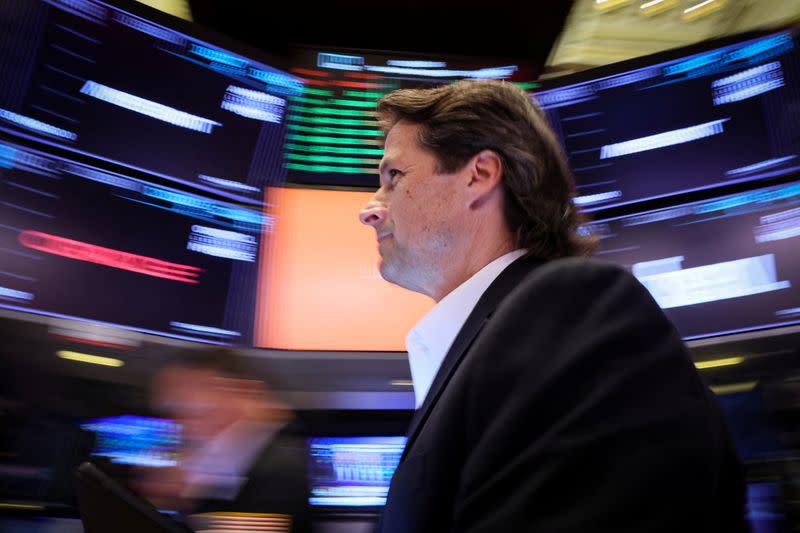Investors shed stocks at fastest weekly rate in 2023

By Lucy Raitano
LONDON (Reuters) -Investors sold stocks at the fastest weekly rate this year in the week to Wednesday, Bank of America Global Research said in a report on Friday.
The BofA data captures flows from the run-up to this week's key central bank meetings from the Federal Reserve and the Bank of England, where both held rates steady.
Central banks from some of the world's biggest economies have served notice that they will keep interest rates as high as needed to tame inflation.
Equities recorded a weekly outflow of $16.9 billion, while investors bought $2.5 billion of bonds, which recorded a 26th straight week of inflows, BofA said, citing EPFR data.
European equities logged their 28th straight week of outflows, with investors shedding $3.1 billion in this latest week.
Energy stocks recorded their largest weekly inflow since March, totalling $600 million, alongside soaring oil prices.
Investors also pulled $300 million from gold and $4.3 billion from cash. Year-to-date, however, investors have ploughed $1 trillion into cash. BofA described the mindset as "cautious & “paid to wait”.
Meanwhile, they have put $147 billion into U.S. Treasuries so far this year.
"...we believe "lower-for-longer" rates & yields caused
bubble & boom in 2010s & 2020/21," the BofA analysts wrote, adding that "higher-for-longer" means a risk of a hard landing and bubble "pops & busts in the first half of 2024.
BofA's bull & bear indicator, a measure of market sentiment, fell to 3.4 from 3.6, remaining at a 'neutral' signal.
They attributed the drop to outflows from emerging market debt funds, high-yield bonds, and from developed markets long-only investors offsetting record long hedge fund position in 2-year Treasuries.
(Reporting by Lucy Raitano; Editing by Amanda Cooper and Jane Merriman)

 Yahoo Finance
Yahoo Finance